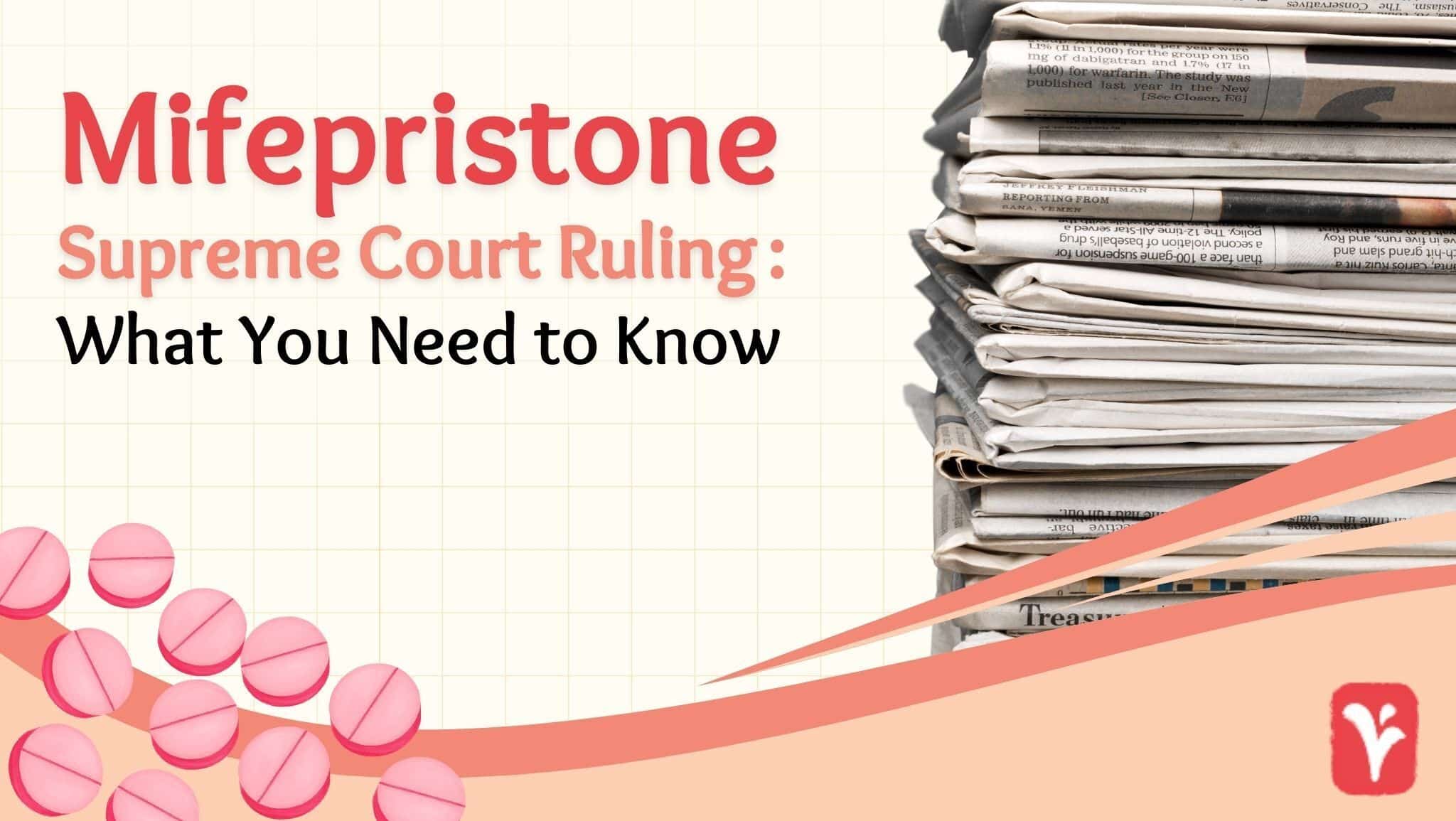You may have seen headlines recently about the Supreme Court abortion pill case, which concerns one of the two pills used for a medication abortion, mifepristone. Mifepristone is safe and effective and has been well-studied since its first approval by the Food and Drug Administration over 20 years ago.
Mifepristone and medication abortion
Medication abortion is the most common abortion method in the United States. A combination of two medications is the most popular regimen: mifepristone and misoprostol. The FDA approves the medication for up to 10 weeks gestation.
First, you’ll take mifepristone, which decreases progesterone levels and stops the pregnancy from growing. Up to 48 hours after taking mifepristone, you’ll take misoprostol, which causes the uterus to contract and empty. Though a combination of the two medications, mifepristone and misoprostol, is the most common way to end a pregnancy, misoprostol-only abortions are also safe and effective, though less effective than the combination of two medications.
What’s going on with the mifepristone Supreme Court ruling?
The FDA first approved mifepristone in 2000. Its safety and efficacy have been well monitored in over 100 peer-reviewed studies, and adverse effects are very rare. Mifepristone is safer than Tylenol. In 2016, the FDA made mifepristone easier to obtain, and in 2021, it became available by mail, decisions that were spurred by studying its 20+ years of safety.
Just months after the Supreme Court overturned Roe v. Wade, anti-abortion doctors and organizations filed a lawsuit against the FDA to invalidate its relaxing of prescribing rules for mifepristone, claiming they are flawed and unsafe and questioning its initial approval of the drug. These cases were won in lower courts, but an appeals court upheld the drug’s initial approval; the case in the Supreme Court pertains to the FDA’s relaxation of restrictions for mifepristone.
With the case in the Supreme Court, justices must decide whether the anti-abortion doctors and organizations have legal standings to challenge the FDA. Then, they will determine whether the changes by the FDA comply with the law.
What is mifepristone used for?
While mifepristone is one of the drugs used in medication abortions, it’s also used for miscarriage management, which prevents someone from bleeding for weeks. Mifepristone blocks the hormone cortisol, so it’s approved to treat Cushing’s syndrome. There are also many clinical trials underway studying mifepristone’s potential impact to help other conditions, such as breast cancer and post-traumatic stress disorder.
What will the impact be?
So far, the FDA has not had to change mifepristone’s prescribing rules, and the drug is still available by mail and through telehealth. The Supreme Court has signaled it will likely allow mifepristone’s continued and widespread availability rather than impose limitations.
The case, if won, would have rippling effects nationwide on mifepristone’s access via telehealth prescriptions. States with severe abortion restrictions and states that have abortion access would both be affected. The case could ban mifepristone’s use in telehealth abortions and abortions by mail.
Some clinics only provide medication abortion, causing more people to travel farther for procedural abortions, which have different guidelines. The decision could also exacerbate racial and socioeconomic divides, as people would have to travel and take time off work for care. The Supreme Court case exists amidst a veil of other abortion restrictions, including 14 states that completely ban abortion, including medication abortion. A decision that favors the suit would also implicate the FDA, undermining its authority to regulate drugs.
Regardless of the ruling, the case adds to confusion, panic, and disinformation around abortion access. It also exacerbates the anti-abortion motive to make abortion unavailable. The Supreme Court is expected to make a final decision by summer. Curious about how to stand up for abortion rights? Please share this post on social media to help us spread the word.
